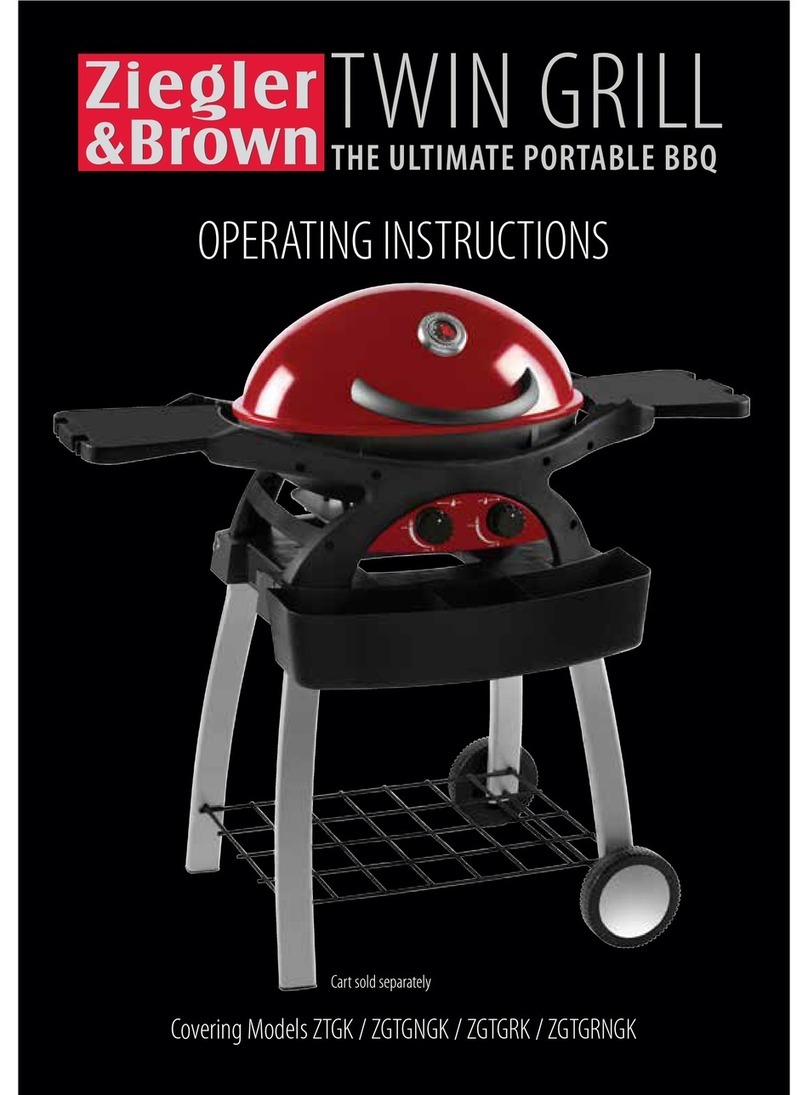
7
How to Lock And Unlock the Hood & Cooking Grill:
The barbeque hood has a spring pin on each side that locks the hood and cooking grill in
position. When both spring pins are pulled fully outwards from the barbeque, the pins can be
rotated and rested back into the UNLOCKED position. This allows the hood to freely open
and close, and allows the cooking grill to be removed / inserted.
Also, when both spring pins are pulled fully outwards from the
barbeque, the pins can be rotated and rested back into the LOCKED
position where the pins will be free to spring back into the barbeque.
Note that the hood can only be locked in the fully closed cooking postion,
or in the fully retracted transport position. In these positions, the hood
and cooking grill will be fixed in place when the spring pin is LOCKED
During cooking, you should always leave the spring pins in the UNLOCKED position so you
can freely open and close the hood.
Note that unless the grease cup is closed againt the barbeque, the grease cup will
deliberately limit the range of movement of the hood as detailed below.
How to Adjust the Grease Cup:
The barbeque has an adjustable grease cup that screws into the body of the barbeque from
underneath. The grease cup should be adjusted to one of three positions:
(1) For transport, once the barbeque has cooled, the grease cup
should be screwed up firm against the body of the barbeque to
minimise leakeage of any residual grease or moisture. You don’t need
to turn it very hard as it has a flexible o-ring that seals softly against
the barbeque. In this position, the grease cup will allow the hood to
swing to any position (when the spring pins are both unlocked).
(2) For cooking, when the barbeque is cool, the grease cup should
be screwed away from the barbeque 3 ½ full turns until the bottom
of the grease cup is in line with the bottom of the two indicator tabs
on the bottom of the barbeque. In this position, the grease cup will
allow optimum airflow into the firebox for combustion, and also act
as a stopper to hold the hood when opened in the ideal position as
a windshield / splatter guard.
Before transport, ensure that the grease cup has been fully cooled, emptied,
wiped clean and screwed firm against the barbeque to allow the hood to fully retract
to the transport position.
(3) For cleaning, once the barbeque has cooled, the grease cup can
be easily unscrewed and removed completely from the barbeque for
grease disposal and cleaning.
ONLY ADJUST THE GREASE CUP POSITION WHEN THE WHOLE
BARBEQUE HAS COOLED TO ROOM TEMPERATURE.
It is also good practice to only adjust the grease cup when the hood is fully closed and both
spring pins are in the LOCKED POSITION so the hood does not accidently swing closed.






























